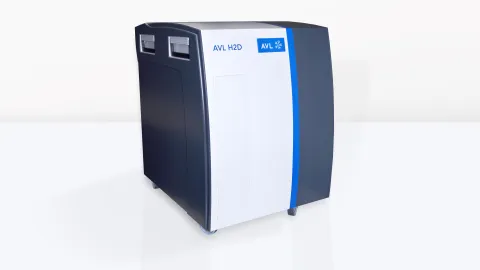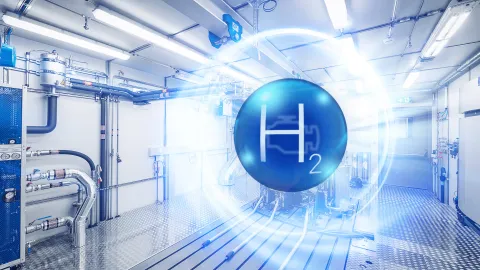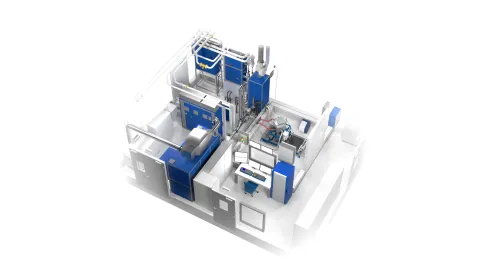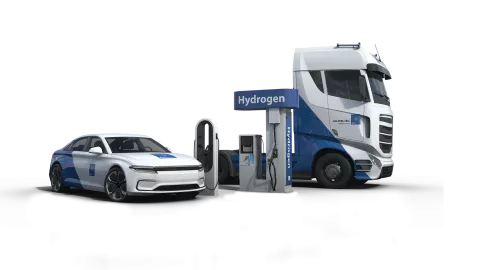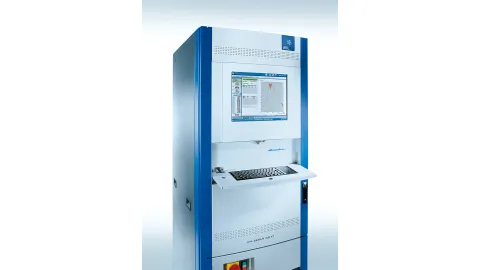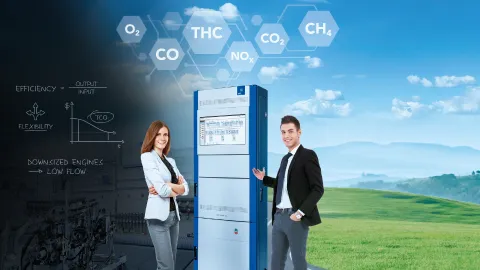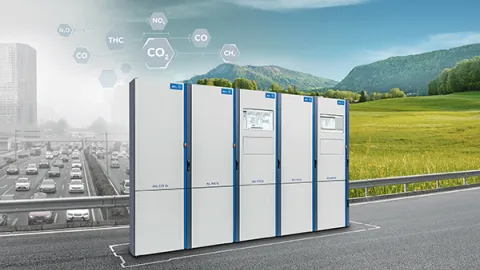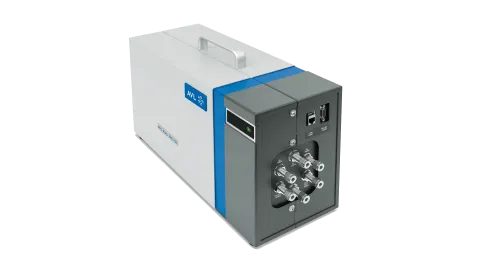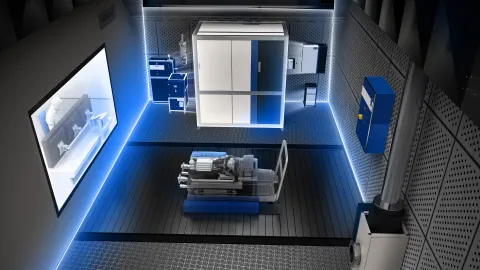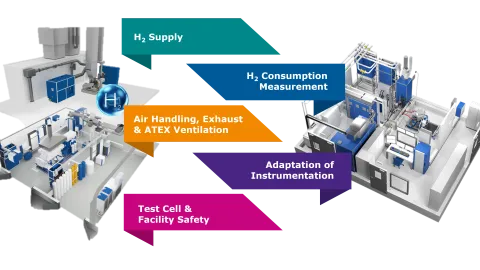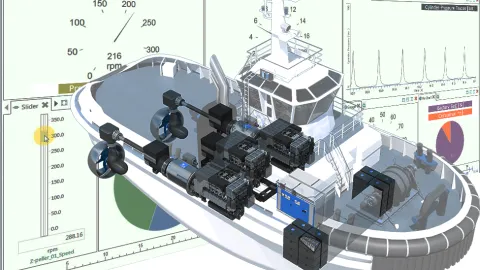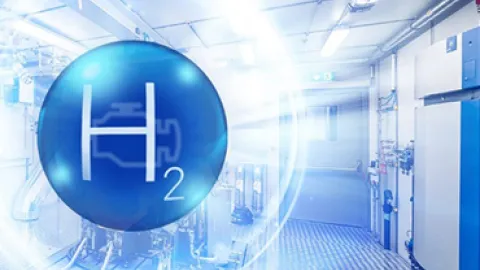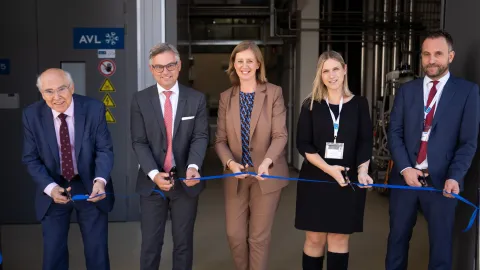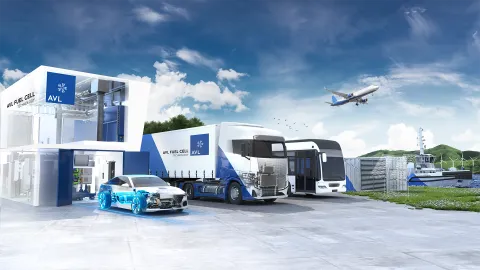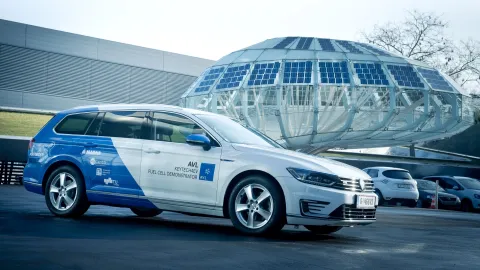The transport and automotive industries are working on various zero-emission concepts to meet future decarbonization targets. Green hydrogen for fuel cells or as fuel for internal combustion engines is considered CO2 neutral and is consequently seen as one of the most promising energy carriers of the future. The AVL H2D hydrogen measurement system is the optimal tool to support the development of fuel cells and H2 combustion engines.
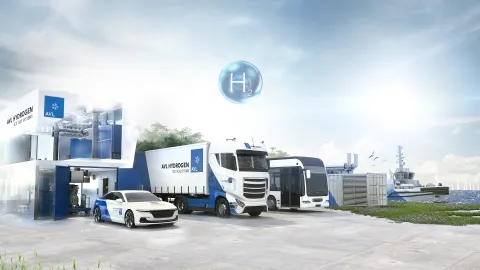
For fuel cell applications, the H2D can be equipped with two inlets, one of them is a high-pressure, low-consumption inlet allowing separate anode measurements.
The system has a sample rate of 10 Hz with fast response times (t90 ≤ 200 ms for main inlet), which is indispensable for fuel cell development.
Optionally, it can measure additional components such as N2, O2, H2O and CO2 (H2D +).
In the test cell, the H2D can be seamlessly connected to an AVL emission measurement system like an AMA SL, AMA i60 or SESAM i60 FT and is controlled by only one common interface to the automation system. Optionally, it can be used stand-alone.
|
Accurate and Fast Analysis
5 - 10 Hz H2 measurement with response time (t90) within 200 ms
Broad Application Range
Specific fuel cell version and optional N2, O2, H2O and CO2 measurement for research and development
Flexible Use
Can be used stand-alone or connected to an AVL emission measurement system
H2D for ICE Testing
The H2D ICE models offer general hydrogen measurement for internal combustion engine with filter and chiller for water removal or a specific H2 ICE measurement without the chiller for a fast H2 measurement in combination with the AVL SESAM i60 FT.
H2D for Fuel Cell Testing
The H2D FC model offers hydrogen measurement for fuel cell applications with a fast sampling inlet for the vehicle tailpipe or the fuel cell cathode side and a separate high pressure and low consumption inlet for the fuel cell anode side.
H2D + for ICE and Fuel Cell Testing
In addition to hydrogen measurement, the H2D + model offers the measurement of nitrogen (N2), oxygen (O2), water (H2O) and carbon dioxide (CO2), either for internal combustion engines with one sample inlet or for fuel cell applications with two sample inlets.
